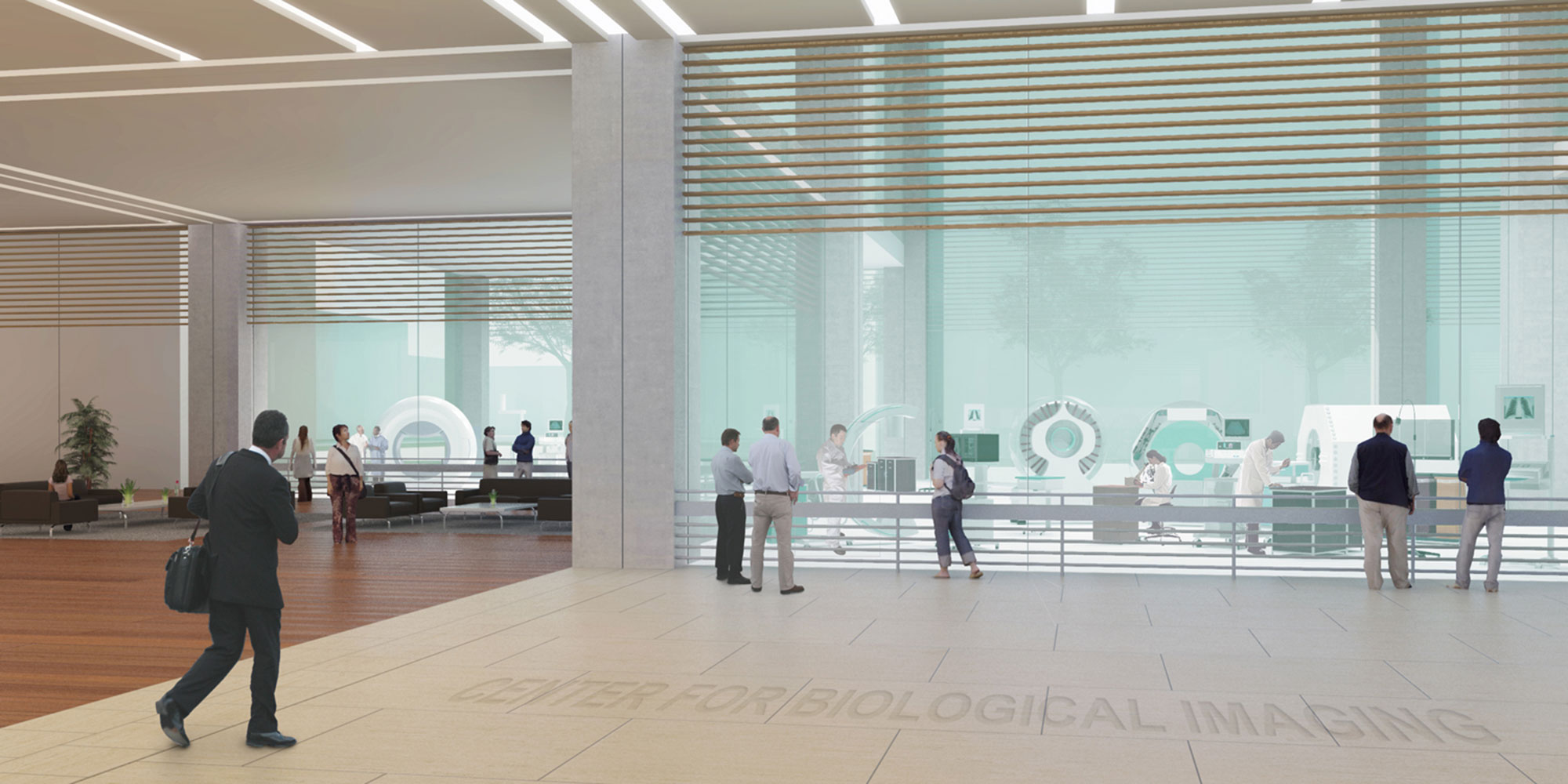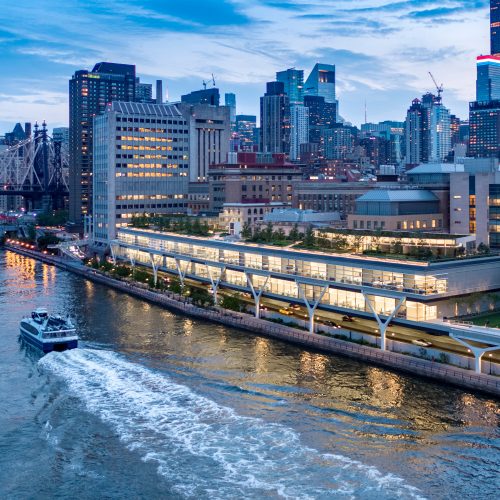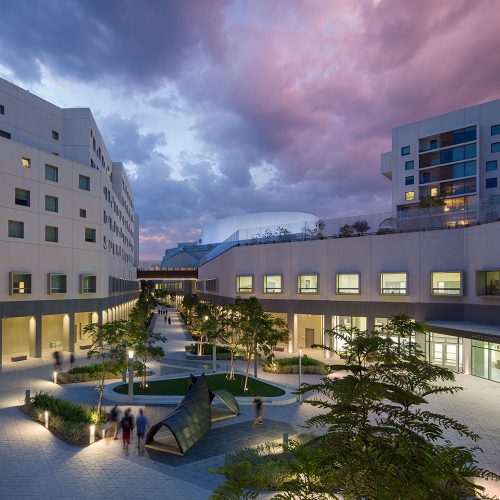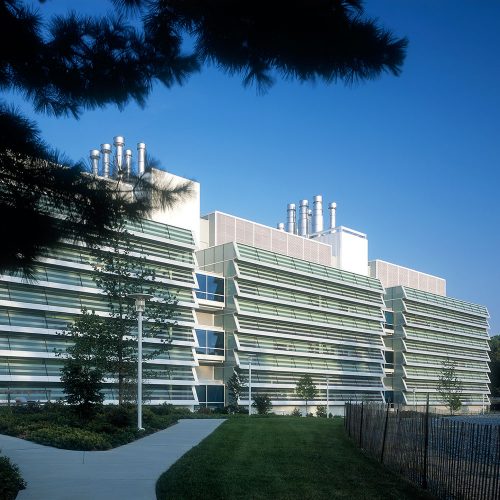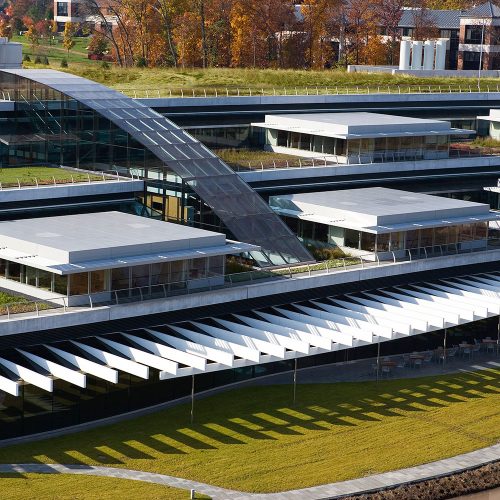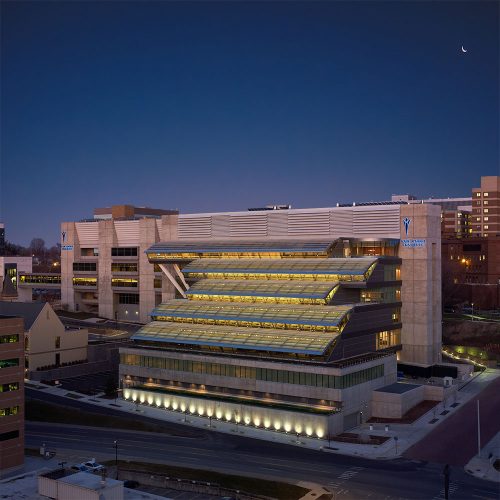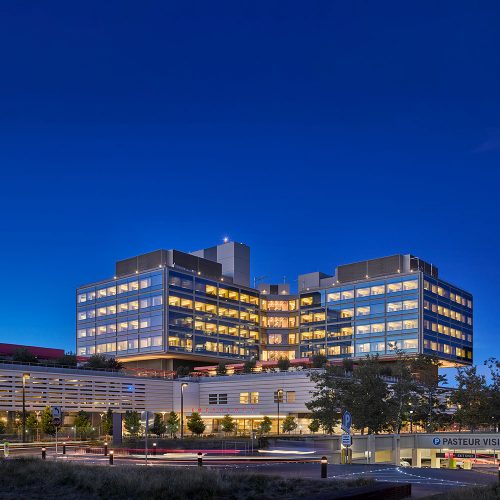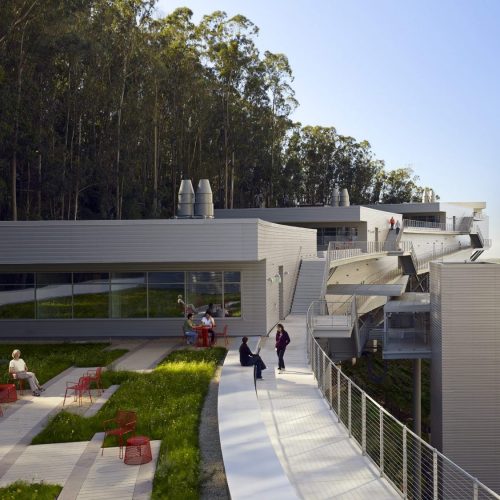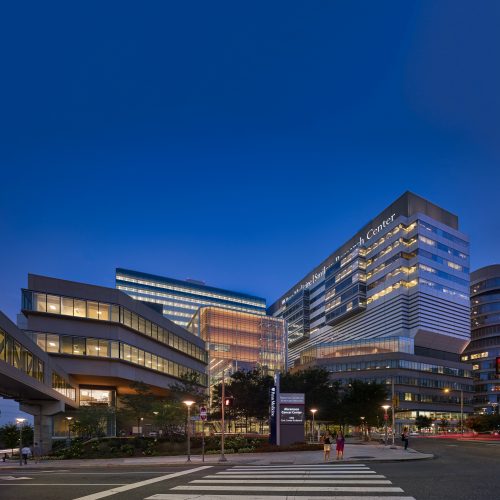Washington University in St. Louis, Center for Biological Imaging and Campus Master Plan
A sustainable and strategic forward-thinking master plan for a leading medical school, which includes a new flexible building to accommodate future growth and advancement in clinical care, innovative research, and the education of tomorrow’s leaders in biomedicine.
The master plan by Rafael Viñoly Architects for the Washington University in St. Louis School of Medicine’s East Campus and Center for Biological Imaging (CBI) integrates a flagship new building as the starting point for the master plan guiding the campus’ future growth of over 1.4 million square feet, on a site of 16.8 acres.
Representing the institution’s 2030 vision of future building development, the design integrates a flexible structural module designed to accommodate research, office, clinical or instructional space, deployed in modular building masses that create courtyards and terraces for shared community use. The plan preserves the campus’ predominant building height of 3-4 stories and creates a significant campus green around which future sites, currently empty or underutilized, can be developed. These low building heights not only respect adjacent residential communities but maximize pedestrian circulation and minimize reliance on elevators within buildings, thereby supporting interaction and collaboration among research community members.
The building module, with a regular grid of integrated infrastructure and furniture, accommodates various research functions as well as common and support spaces. Designed to be able to grow flexibly in the horizontal and vertical directions, this modular building block can aggregate in all four directions, creating contiguous spaces that accommodate a wide range of sizes of research programs. Within each future building, mezzanine floors can be added in the upper portions of the modules to accommodate office space, or they can be omitted at locations housing large pieces of equipment.
The Mallinckrodt Institute of Radiology is the clinical radiology department at the Washington University School of Medicine. It is considered among the very best in the world. The 400,000-square foot CBI will be a new extension of the Mallinckrodt Institute on campus. The building will include demonstration and exhibition spaces to showcase Washington University School of Medicine’s achievements in imaging and biomedical research. The building will also make manifest the Institute’s commitment to sustainability through passive façade design standards, daylighting, efficient building services, and minimization of waste during and after construction through “plug and play” laboratory fit-out components. Immediately adjacent to the Washington University Medical Center, the plan will reinforce the University’s commitment to innovative translational research and clinical care.








